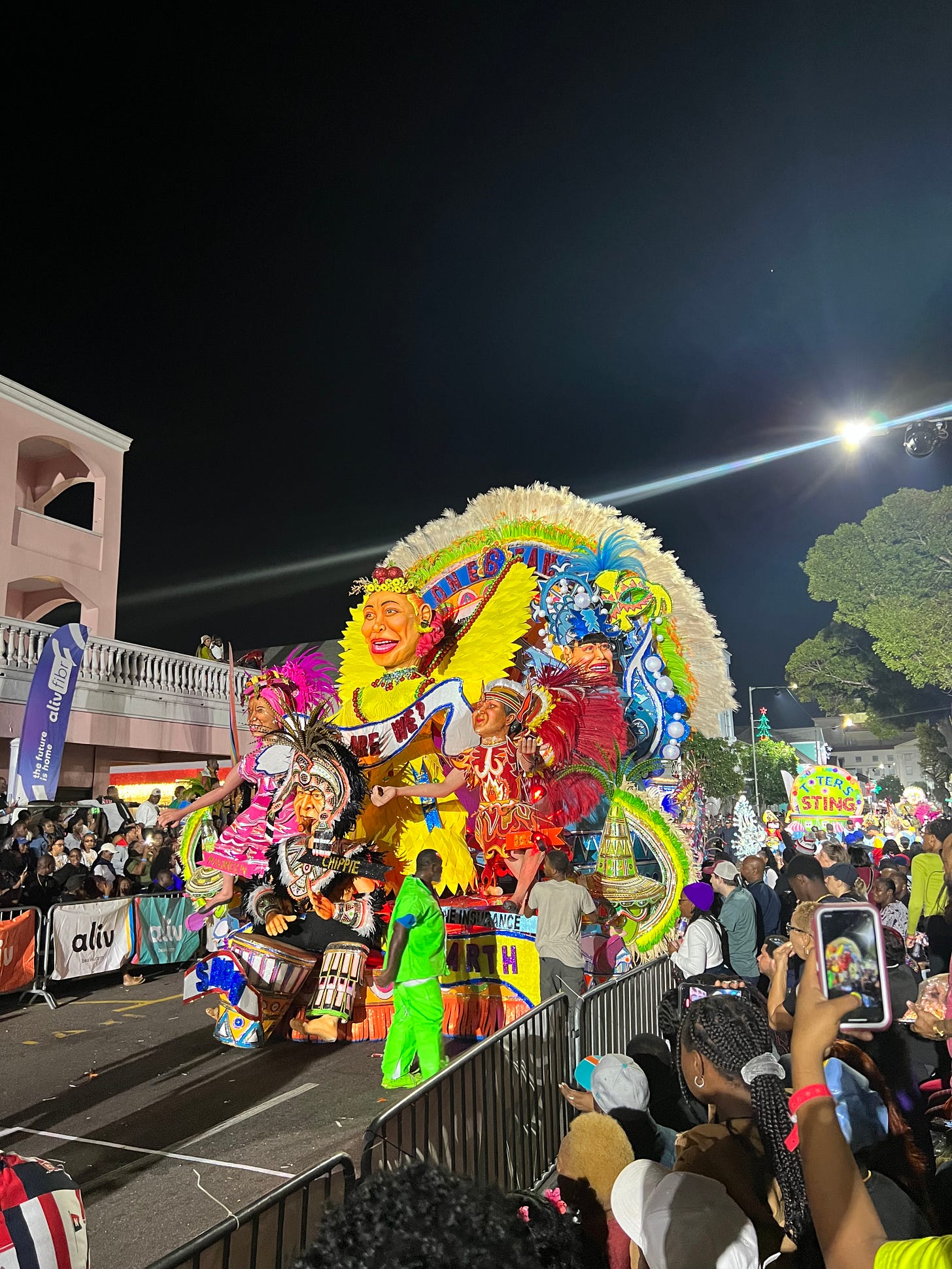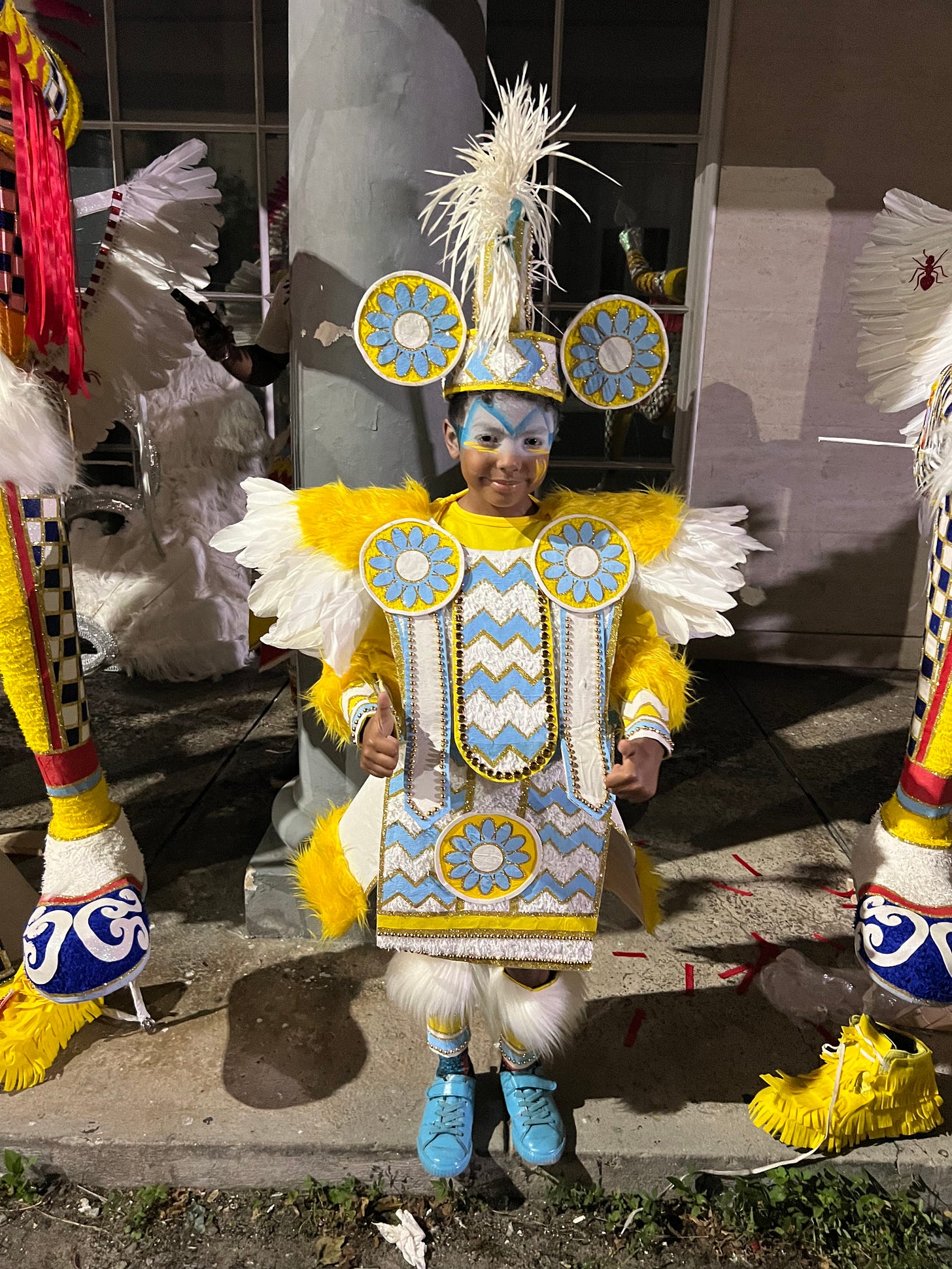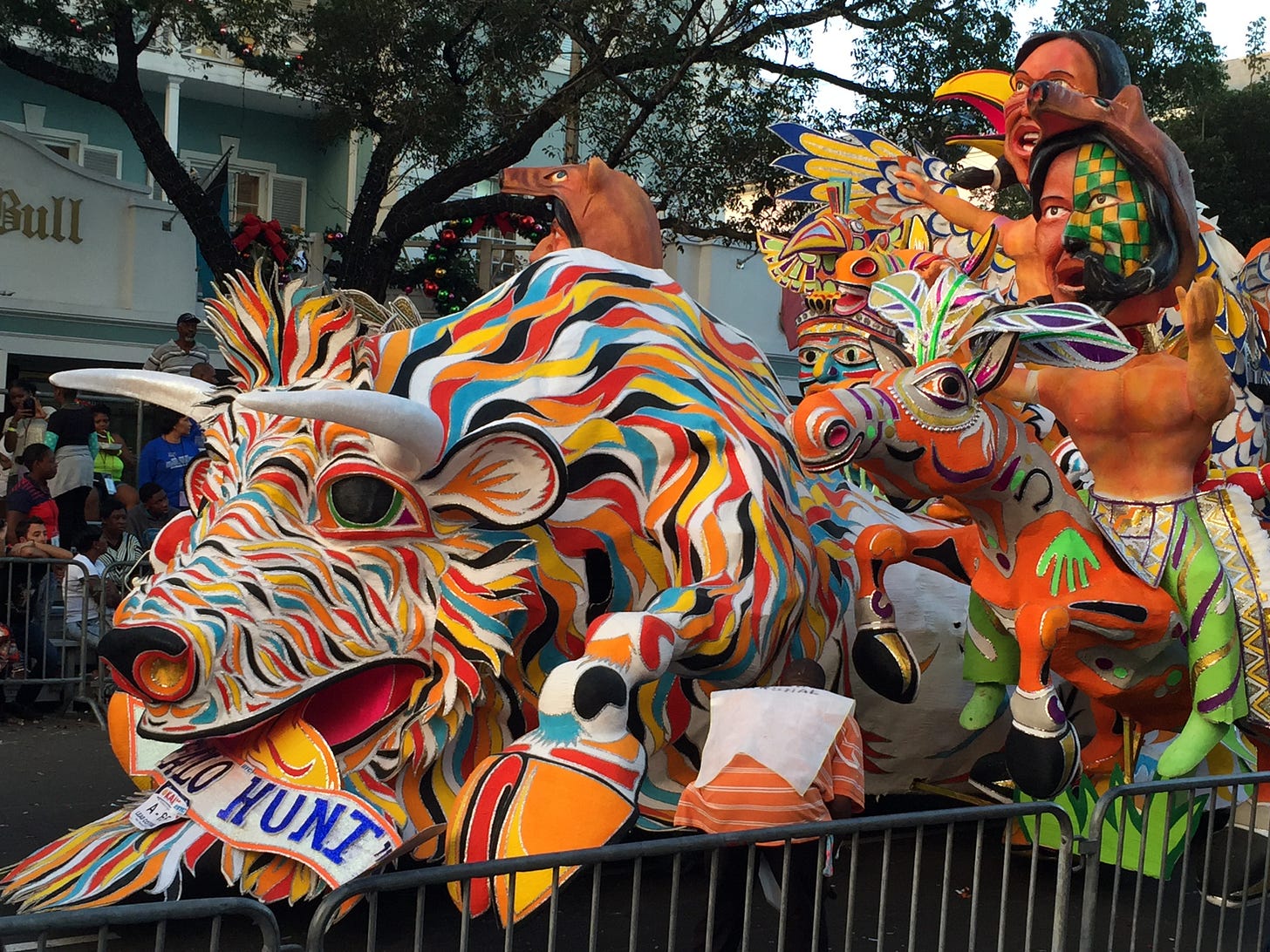This past December, my eight-year-old son, Miles, took part in the Bahamian tradition of Junkanoo for the first time, along with my husband, who had participated in the annual parade since he was the same age. Though the exact origins of the festival are unknown, it was said the tradition dated back to the 18th century, when slaves were given precious time off for the holidays. Using the materials available to them - newspaper, cardboard, natural sponge and other “junk” - they created a version of the celebrations of their distant African homeland. Junkanoo had grown into a beloved event in The Bahamas, but it was an unlikely rite of passage for a young New Yorker.
When Miles expressed interest in “rushing” as they call it, I was pleased, but nervous. The parade started well after his bedtime and continued all night until morning. What if he was too exhausted to keep up? What if he had an asthma attack? A panic attack? He’d attended his first parade at six months old, wiggling to the beat in a baby carrier. But being a spectator and a performer were not the same. After many conversations, my husband and I agreed to let him try.
The night after Christmas, or Boxing Day, Miles and I found ourselves wandering downtown Nassau, which had become a wonderland beneath the darkened sky. Lead pieces the size of buildings loomed above us, festooned with colorful figures related to the group's theme. There were mermaids, horses, dragons, snakes, fish and more, each design colorful and elaborately patterned. Around every corner, we heard music, as the bands warmed up their instruments. The maze of streets, which were usually filled with cruise ship tourists, were taken over by glittering dancers in feathered crowns. I imagined it was like being backstage at a musical theater production, except outdoors, with palm trees.
I stayed with Miles as he got his face painted and his costume fitted. The outfit my husband had constructed for him included a cardboard skirt, chest piece, headpeice, and arm and leg bands. Each surface was pasted with strips of crepe paper cut fine to create a fringe texture. This technique was taught by older generations in the “shack,” the work spaces where each group gathered for months in preparation. Miles’s costume was decorated with sky blue and white patterns, with yellow and white feathered trim. As he practiced his moves in the street, I thought: Wow, this is really happening.
As midnight neared, he yawned a few times, but I could tell adrenaline would keep him going. Eventually I left him with my husband for the final preparation. Together with a few family members, I stood in the bleachers lining Bay Street, waiting to see his familiar figure transformed.
To an outsider, the parade might seem like a party, but for the locals, it was a fierce competition. Regional and familial ties bonded Bahamians to their groups with the fervor of professional sports fans. My husband’s group was called “One Family,” defending champions known to take risks and bring the unexpected. This year, their Boxing Day theme was a celebration of Junkanoo itself. They paid homage to Junkanoo leaders of the past, different eras of the parade, and the major groups, like the Valley and the Saxons. As the members of One Family began to dance past us, chanting, “Warriors!” and rousing the crowd, I could hardly believe my son was among them.
When I finally spotted him, Miles was looking wide-eyed at the crowd. I screamed his name again and again, but it took a few moments for him to see me. When he did, he grinned, joy bursting from his little brown face. He started dancing with extra flair, his shoulders moving in tandem with his two-step. The metallic gold accents on his costume shone under the bright lights, and the long white feathers lining his headpiece bobbed and waved.
I had a few exhilarating seconds to snap pictures of him and my husband, and then, the moment was gone. They moved past us, following the procession toward Rawson Square. Soon, the music section, which was always at the back of the group, filled the air with a glorious cacophony of trumpets, tubas, cowbells, and whistles. The finale came with the deep, soulful rhythm of the goat skin drums, the beating heart of the group propelling it forward.
A few hours later, Miles returned home, happy and hungry. After a makeshift meal of pasta, popcorn and apple slices, I scrubbed the face paint off his cheeks, and put him to bed. As I watched him curl up under the covers in his Spiderman pajamas, I felt grateful that everything had gone smoothly, and that I was able to bear witness to his momentous night.
One Family didn’t win that year, but the parade was a win for our family. Miles had proved that though he wasn’t Bahamas-born, he was still a Junkanoo “warrior.” He had danced down Bay Street in the footsteps of his forefathers, connecting his narrative with the story of the island.
Thank you for reading! Best wishes for 2024!






